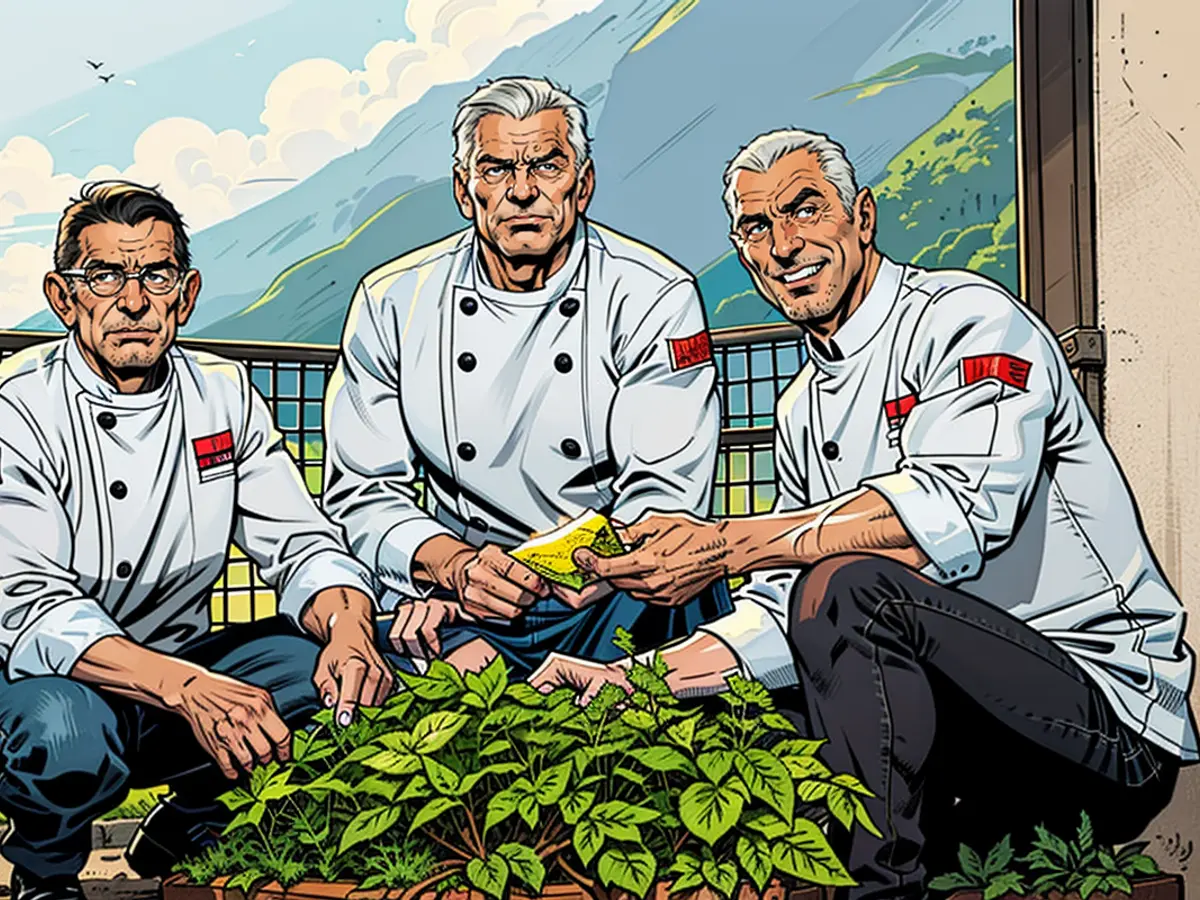Passion is the most crucial element.
Another cookbook focusing on Italian cuisine has caught my attention! Don't expect me to be skeptical though, I'm always up for a good read, especially when it comes to rice dishes. Recently, I came across a valuable piece of advice in a similar cookbook, suggesting that one should only serve guests dishes they genuinely enjoy themselves. Keeping this in mind, "Passion Risotto" is a must-read for me. If you're a rice lover like me, you'll be in for a treat!
The authors behind "Passion Risotto" are three esteemed chefs from South Tyrol, part of the acclaimed "So kocht Südtirol" team: Heinrich Gasteiger, Gerhard Wieser, and Helmut Bachmann. Their most renowned work, "So kocht Südtirol", has been a go-to guide for South Tyrolean cuisine since 2000 and is now in its 17th edition. A series of other themed cookbooks by the trio, including this year's "Passion Risotto" about rice and risotto, has been published by Athesia Tappeiner Verlag. These books are also available in Italian.
These experienced chefs have made a name for themselves in the Alpine region, selling over 1.3 million copies of over 90 cookbooks in the last two decades. Gasteiger is a cooking teacher at the hotel management school "Kaiserhof" in Merano, Wieser headed the gourmet restaurant in the Hotel "Castel" in Dorf Tirol to two Michelin stars and five Gault-Millau toques, and Bachmann teaches at the catering vocational school "Emma Hellenstainer" in Bressanone.
Risotto suits every gathering
One may be surprised at how versatile risotto can be. I've been sticking to either vegetable or mushroom risottos, or ones with meat. "Passion Risotto" has convinced me that I need to change things up! The book offers 5 recipe chapters, demonstrating the breadth of possibilities with rice: Vegetables & Grains; Herbs & Mushrooms; Cheese & Meat; Fish & Seafood; Sweet. With an array of ingredients, this all-rounder promises surprises and delight for every taste bud. Whether it's simple everyday dishes or sophisticated guest fare, the recipes are easy to prepare, with some requiring more skill than others. For instance, perfectly poaching quail eggs without damaging the yolk may present a challenge in "Risotto with quail eggs and white Alba truffle".
The book also explores some unexpected ingredients such as beer and hop cones or licorice. While wine is commonly used to extinguish rice during risotto preparation, beer is a surprising choice! Recipes like "Hop risotto with beer and pepperoncino" or "Saffron risotto with licorice" are sure to pique one's curiosity. Just like with most other recipes, alternatives are provided. Instead of beer, hop tea may replace it, and licorice powder may be replaced with gold leaf if you have excess.
When it comes to vegetable risottos, the wide selection of seasonal vegetables ensures plenty of room for experimentation. From asparagus to mushrooms and cabbage, there's never a shortage of options. Herb risottos, too, rely on fresh and seasonal ingredients. Cheese risottos provide a simple taste, with aromatic cheese lending a rich flavor. Risotto with mushrooms or truffles is a staple in South Tyrolean cuisine, delivering an unforgettable taste. Meat lovers can enjoy dishes like pan-seared pigeon breast, wild ragout, or chicken breast strips. The fish or seafood risottos are truly special, with "Champagne risotto with oysters and passion fruit" being just one example. For more down-to-earth options, there are recipes like Parmesan risotto or breadcrumb risotto. The "Sweet" chapter even extends beyond traditional rice pudding, offering over 70 delicious recipes with success guaranteed!
Rice is far from plain
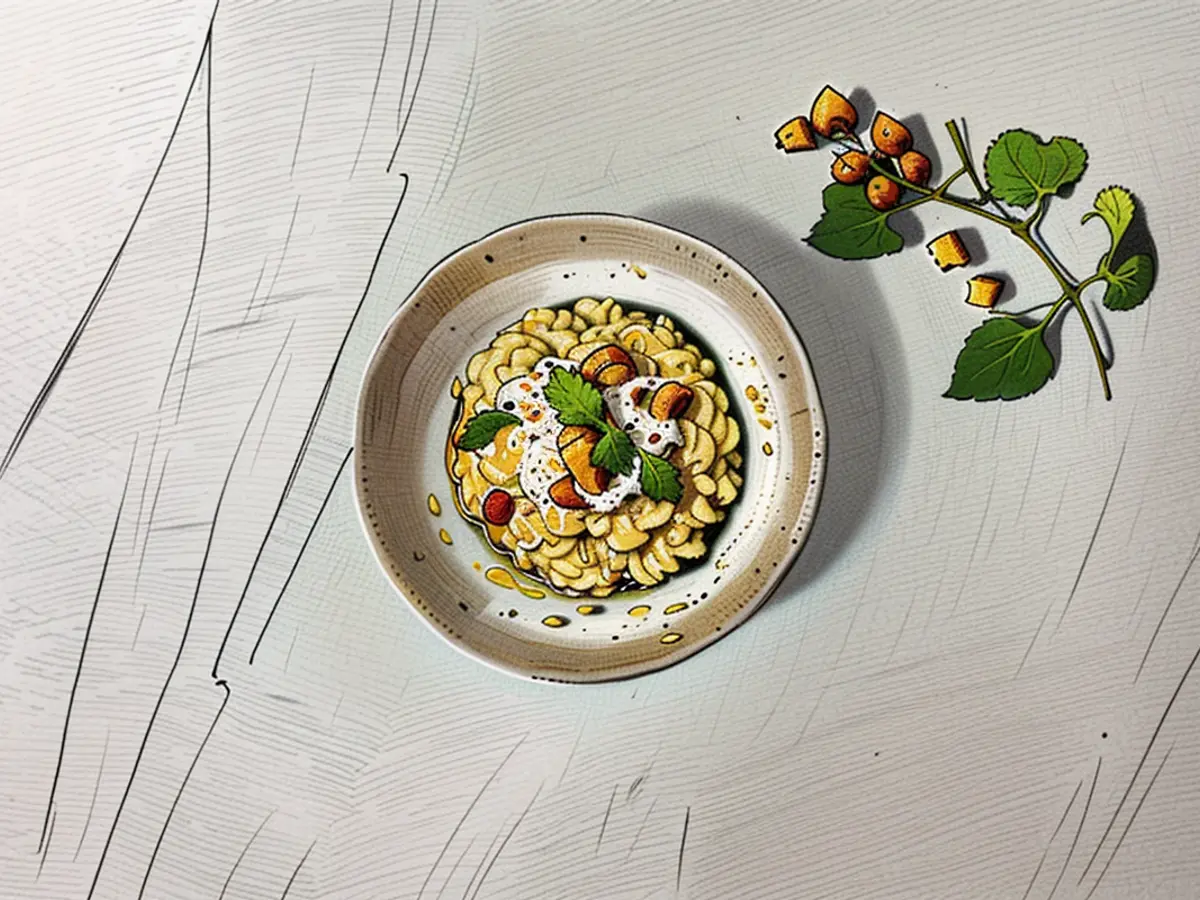
The authors of "Passion Risotto" waste no time providing practical information rather than stories or features. Filled with fascinating facts and tips about rice and risotto, in addition to numerous step-by-step photos, the book provides a clear and easy-to-follow guide for any interested cook. Before diving into the recipes, the essential basics and product information will give you an understanding of why risotto is integral to Italian cuisine. After all, risotto has been the national dish since the 15th century, with each region showcasing its unique specialty. This rich history and variety make risotto a captivating learning experience.
We learn about rice's health benefits and its origins, as well as its importance in Italian cuisine. By including information about various types of rice, the book enables novice cooks to better understand ingredients and prepare better dishes. "Passion Risotto" is not merely a collection of recipes, but a thorough exploration of the fascinating world of rice and risotto.
Knowing the appropriate rice type is crucial, but it's not enough - we also need the right broth. Unlike most Asian dishes where rice is often a side dish, risotto rice is primarily not cooked with water. Long grain rice varieties are used for side dishes, and remain loose and grainy when cooked. Thus, appropriate broths are also indicated in the recipes, as this plays a significant role in the taste of your risotto. You'll find basic recipes for different broths in the book. Of course, you can also use store-bought fonds; there's usually a variety available, even organic quality. However, I strictly prohibit broth cubes and pastes in my kitchen. The high salt content alone ruins all aromas, and I don't even need to read the fine print about the other ingredients.
Risotto is a Handcrafted Delight
Now we have the correct rice variety and the right broth. The question remains: how much is enough? I confess, I often guess the dry quantity of pasta and rice. It's a gamble. The author trio recommends as a general guideline: "What fits in the bowl as dry rice, expands to three times its size." Isn't that straightforward? For those who enjoy mathematics: 50 grams of dry rice yields 150 grams of cooked rice. So don't be fooled by "the little rice" in recipes serving four people - the quantities are accurate.
And what if there's too much? Even for that, Gasteiger, Wieser, and Bachmann have suggestions. The amount of broth to add is crucial to know, and of course, the broth must be hot and added gradually: "The rice should be just covered by the liquid. No more than that." But how much broth is too much or too little? The South Tyrolean guideline is: 350 grams of broth per 100 grams of rice.
The series of important steps are explained in great detail, from the beginning sweating to constant stirring, and finally seasoning. Understanding why and how to sauté onions gently, move dry rice into it, and continuously stir until all grains are translucent, is essential for a creamy risotto. Sweating the grains ensures that the starch in the rice grain changes, preventing the starch paste from becoming sticky. Some of the starches caramelize, adding a unique flavor to the risotto, similar to the oil, which also enhances flavor. If you've stirred enough, allowing each rice grain to constantly interact with the broth, preventing sticking to the bottom, and releasing starch through movement, then is the only time to season.
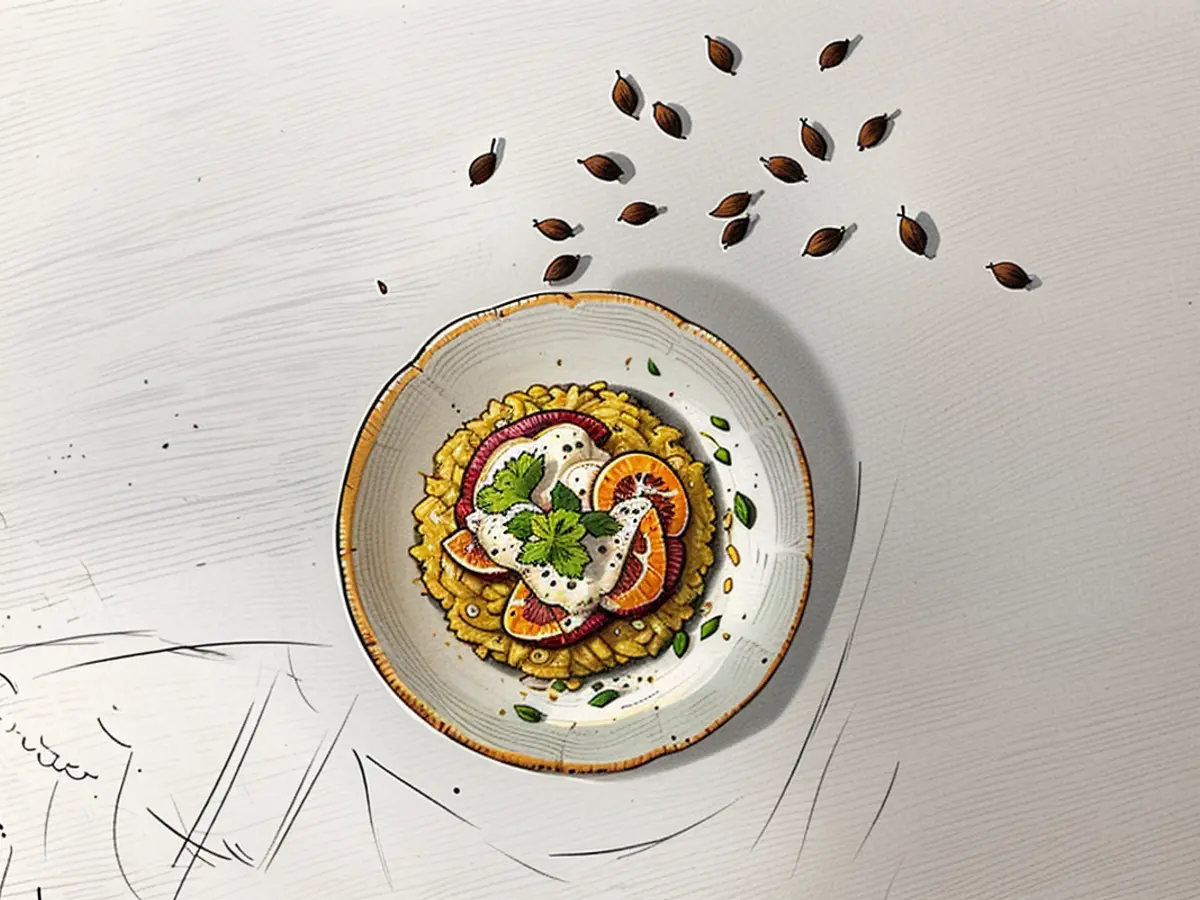
Subtle warning: The most common mistake is overcooking the rice. "The rice is perfectly cooked as soon as it has a slight bite, but no longer tastes raw," it states in the book. The risotto's texture will continue to change after being removed from the heat, so the rice grains will soften further. The authors also provide tips for the right seasoning and tasting.
The Italian Risotto's Spanish Twist: "Mantecatura"
The Spanish word "manteca" translates to butter, and it plays a prominent role in "mantecatura". Vegetarians can use olive oil or avocado with the same effect. The purpose of this final act in the kitchen is to make the risotto even creamier, combine all the ingredients, and emphasize their flavors. It's crucial to take the pot off the heat and gently whisk in very cold (even frozen) fats.
Let's get cooking with three recipes from "Passion Risotto":
Porcini Mushroom Risotto
Preparation:
30 minutes, easy, vegetarian
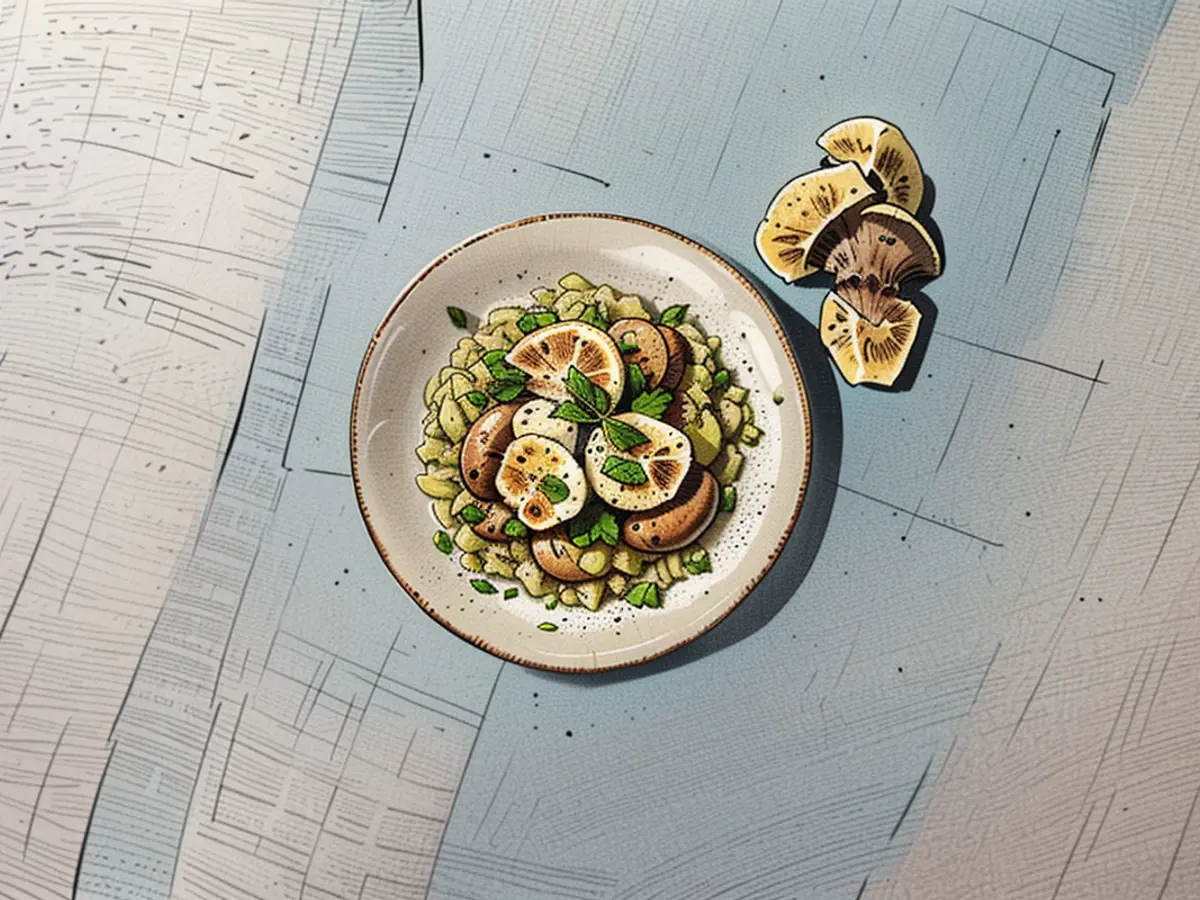
- Clean, wash, and quarter or slice large porcini mushrooms (refer to step-by-step page 37).
- Peel and finely chop leeks and garlic, then sauté in butter.
- Add the porcini mushrooms and sauté briefly. Season with parsley, salt, and pepper.
- Add the rice, stirring constantly until it becomes translucent. Deglaze with Madeira wine and let the liquid evaporate completely.
- Gradually add chicken broth, ensuring the rice is always covered with liquid.
- Cook, stirring frequently, for about 18 minutes until the risotto is al dente but creamy.
- Finish with marjoram, rosemary, cold butter, and Parmesan.
- Serve the risotto on plates, garnished with porcini mushrooms, marjoram, and Parmesan.
Tips
Mushrooms out of season can be replaced with champignons or dried porcini mushrooms.
The risotto will be even better if you fold in some whipped cream before serving.
You can also refine the risotto with some brown veal sauce (see page 29).
Risotto with Spiced Mackerel
Preparation:
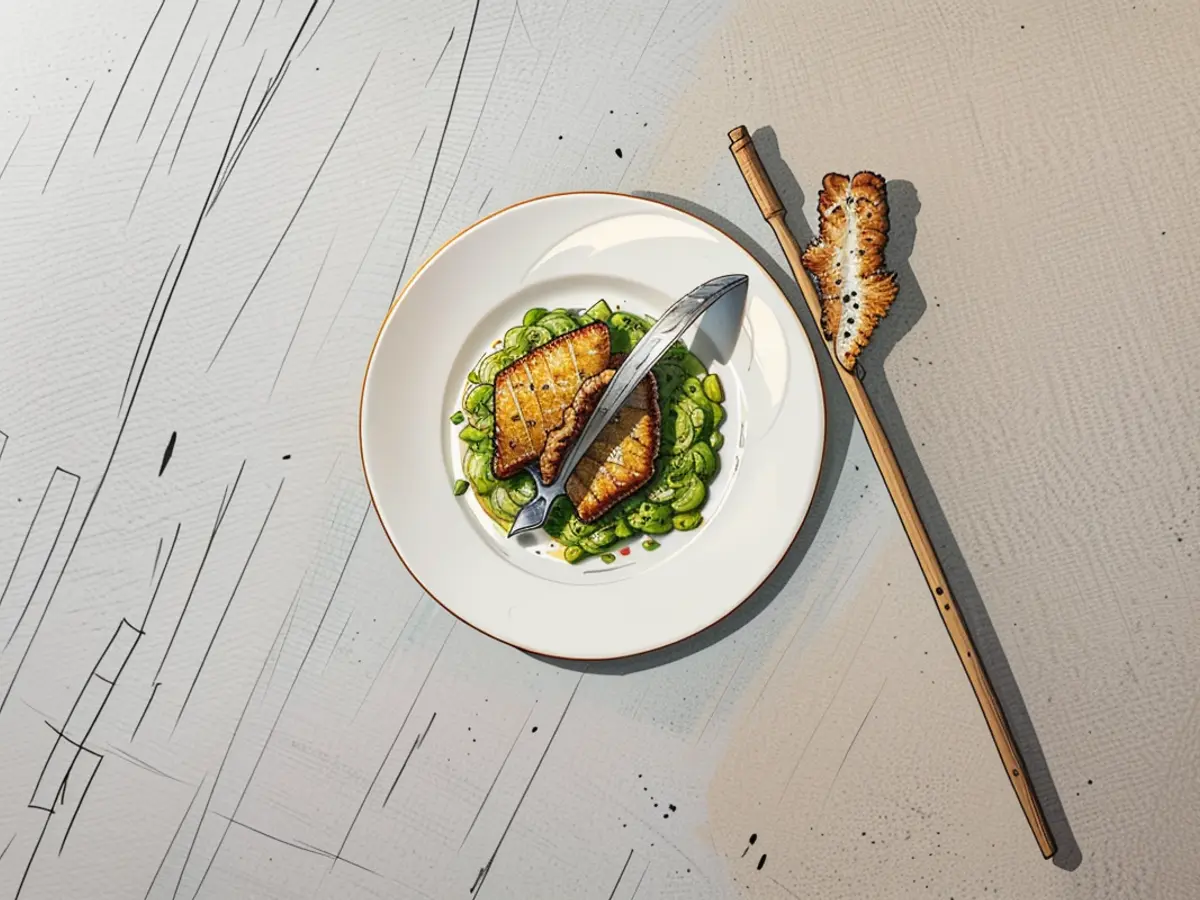
50 minutes, medium
Mackerel Fillets:
- Season the mackerel fillets with salt and pepper.
- Mix coriander, fennel, and ginger and sprinkle both sides of the mackerel fillets with it.
- Sear both sides in olive oil for about 4 minutes. Set aside.
Risotto:
(Continue from the original text)
- Slice and minutely dice onions and garlic, then gently sauté with lemongrass in oil.
- Introduce the rice and allow it to turn transparent at low heat, stirring consistently.
- Rinse with white wine and let the liquid completely dissipate.
- Bit by bit, incorporate vegetable broth, ensuring the rice is consistently submerged.
- Cook, frequently stirring, for about 18 minutes until the risotto is al dente but creamy.
- Eliminate lemongrass and season the risotto with salt and pepper.
- Top it off with cold butter, Parmesan, and parsley.
Conclusion
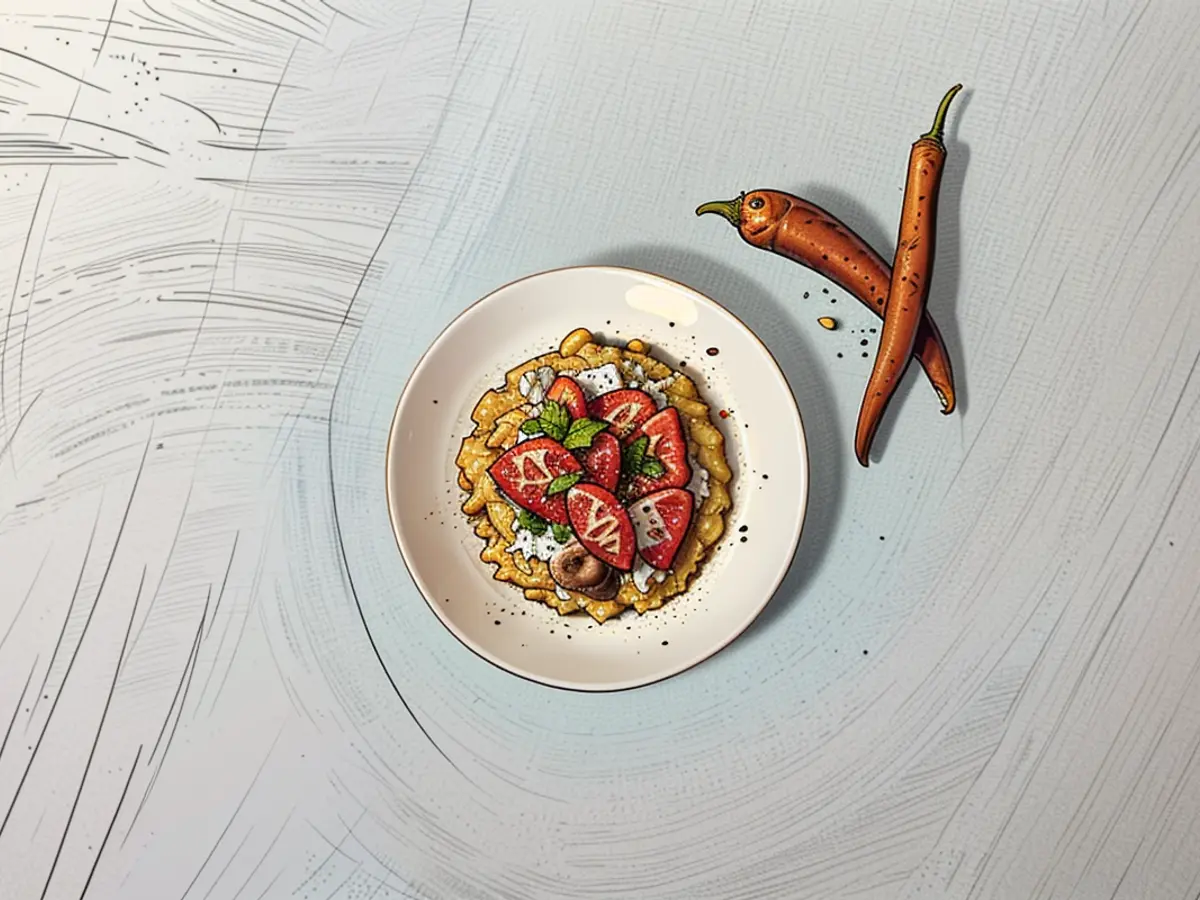
- Place the risotto on dishes. Sprinkle the mackerel fillets with sea salt and place them on the risotto.
- decorate and serve with lemongrass, chervil, and olive oil.
Suggestion
Instead of mackerel, you can also opt for trout, rainbow trout, sea bass, or wreckfish.
- Stir continuously and let simmer for about 18 minutes.
- Combine apples, raisins, and fig purée and enhance with cream.
Caramelized Figs:
- Dissolve granulated sugar in a non-stick pan and deglaze with sweet wine.
- Allow the caramel to reduce and combine with butter.
- Slice figs, add to the caramel, and gradually heat.
- Arrange the risotto on plates and position the caramelized figs on top.
Suggestion:
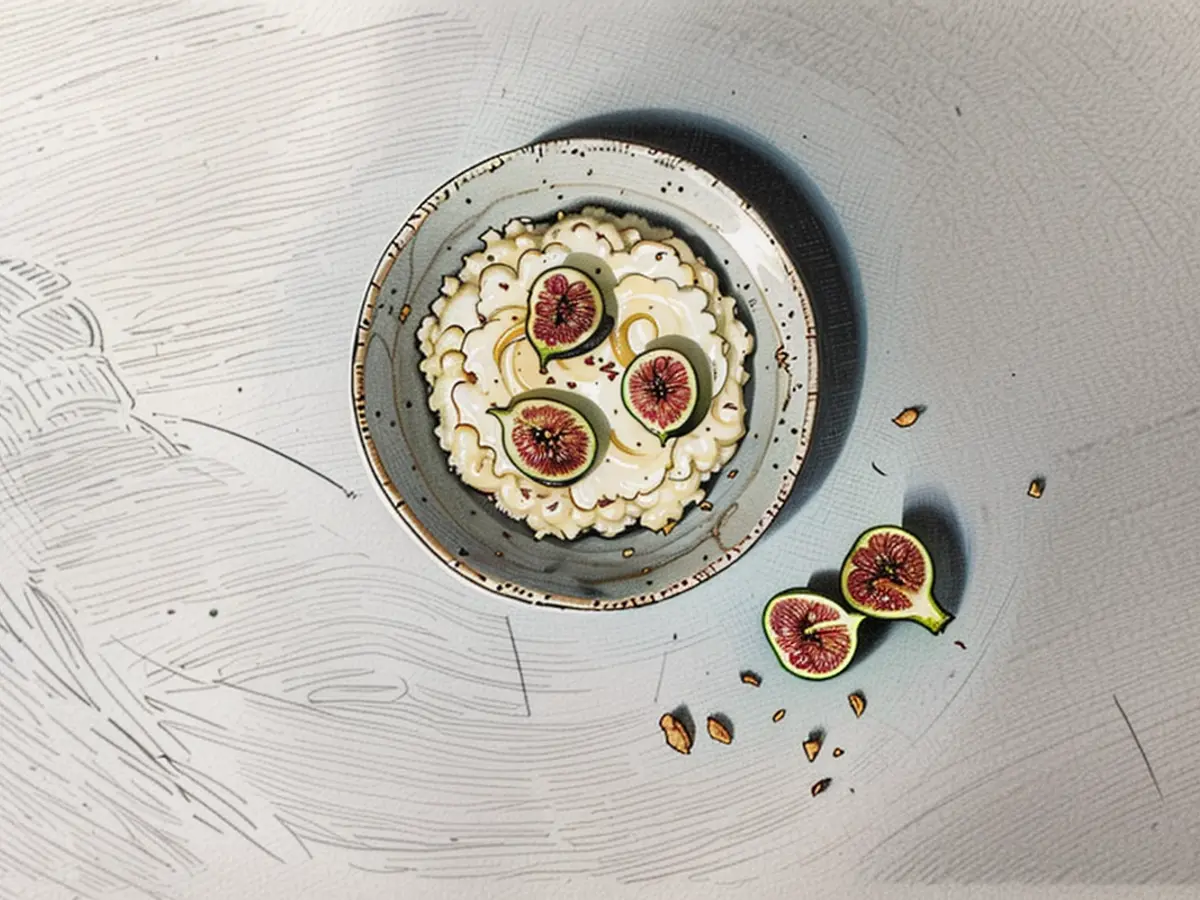
Purple figs work particularly well.
Enjoy your cooking! Greetings, Heidi Driesner.
The trio of chefs responsible for "Passion Risotto," Heinrich Gasteiger, Gerhard Wieser, and Helmut Bachmann, are part of the renowned "So kocht Südtirol" team and have published several themed cookbooks under Athesia Tappeiner Verlag, including this year's edition focused on rice and risotto.
The "Passion Risotto" book, authored by these experienced chefs, offers a wide range of recipes for various types of risottos, including Vegetables & Grains, Herbs & Mushrooms, Cheese & Meat, Fish & Seafood, and a Sweet chapter, providing plenty of room for experimentation and delight for any rice lover.
